
May 2019
Leveraging implicit knowledge in neural networks for functional dissection and engineering of proteins
Check it out here
Leveraging implicit knowledge in neural networks for functional dissection and engineering of proteins
Check it out here

May 2019
Perspective: Stop explaining black box machine learning models for high stakes decisions and use interpretable models instead
Read it here
Perspective: Stop explaining black box machine learning models for high stakes decisions and use interpretable models instead
Read it here


May 2019
Seamless data architecture to support artificial intelligence success in healthcare
See more here
Seamless data architecture to support artificial intelligence success in healthcare
See more here





April 2019
Applications of supervised and unsupervised machine learning in Pharmaceutical drug development
See more here
Applications of supervised and unsupervised machine learning in Pharmaceutical drug development
See more here
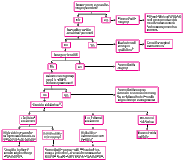
April 2019
Development and validation of a machine-learning risk algorithm for major complications and death after surgery
Read more here
Development and validation of a machine-learning risk algorithm for major complications and death after surgery
Read more here
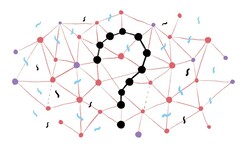
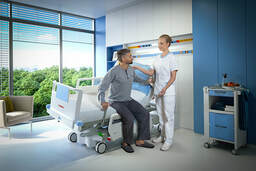
March 2019
A computer vision system for deep learning-based detection of patient mobilization activities in the ICU
Check it out here
A computer vision system for deep learning-based detection of patient mobilization activities in the ICU
Check it out here
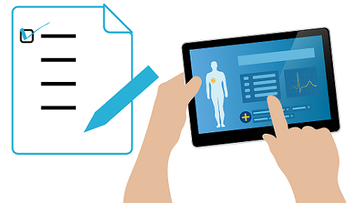




March 2019
As AI establishes its foothold in the healthcare space, the industry looks to identify better options to aggregate data (the keystone of AI/ML)
See more here
As AI establishes its foothold in the healthcare space, the industry looks to identify better options to aggregate data (the keystone of AI/ML)
See more here

March 2019
This recent paper shows that deep neural networks can ID histologic patterns on slides of resected lung adenocarcinoma
Learn more here
This recent paper shows that deep neural networks can ID histologic patterns on slides of resected lung adenocarcinoma
Learn more here


February 2019
Predictive Modeling of the Hospital Readmission Risk from Patients’ Claims Data Using Machine Learning: A Case Study on COPD
Read more here
Predictive Modeling of the Hospital Readmission Risk from Patients’ Claims Data Using Machine Learning: A Case Study on COPD
Read more here

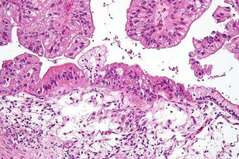
February 2019
In a recent trial, the new computational tool, TEXlab, uses 4 biological characteristics (structure, shape, size, and genetics) over ovarian tumors to generate a Radiomic Prognostic Vector (RPV) score
Read more here or here
In a recent trial, the new computational tool, TEXlab, uses 4 biological characteristics (structure, shape, size, and genetics) over ovarian tumors to generate a Radiomic Prognostic Vector (RPV) score
Read more here or here

February 2019
SHAP (SHapley Additive exPlanations) - a unified approach to interpreting model predictions
Learn more here
SHAP (SHapley Additive exPlanations) - a unified approach to interpreting model predictions
Learn more here


February 2019
Medical AI Safety: Doing it Wrong. In healthcare, model performance does not always equate to outcomes
See more here
Medical AI Safety: Doing it Wrong. In healthcare, model performance does not always equate to outcomes
See more here
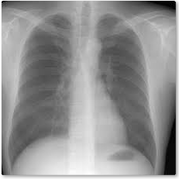

January 2019
Practical implementation of AI technologies in healthcare. Hint: it includes addressing data sharing and data standardization
See it here
Practical implementation of AI technologies in healthcare. Hint: it includes addressing data sharing and data standardization
See it here
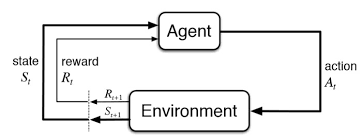


January 2019
AI voted as the most disruptive technology in healthcare. Does this translate to most impactful?
Check it out here
AI voted as the most disruptive technology in healthcare. Does this translate to most impactful?
Check it out here



December 2018
Clinical Data Support Systems in the Age of AI: Challenges to Adoption and Solutions
Read more here

November 2018
Encoder-Decoder algorithm can help identify chief complaints from EHR data through natural language processing
See more here
Encoder-Decoder algorithm can help identify chief complaints from EHR data through natural language processing
See more here

November 2018
Generative Adversarial Networks (GANs) used to generate finger print scans that can fool phone locks
Learn more here
Generative Adversarial Networks (GANs) used to generate finger print scans that can fool phone locks
Learn more here

November 2018
What’s really scary about AI is not its smartness but its dumbness: what AI can and cannot do.
Read about it here
What’s really scary about AI is not its smartness but its dumbness: what AI can and cannot do.
Read about it here

November 2018
AI relates often relates imperceptible observations to outcomes in a fashion that’s unapologetically oblivious to mechanism. This challenges physicians and drug developers by explicitly severing utility from foundational scientific understanding.
Not sure what that means? See more here
AI relates often relates imperceptible observations to outcomes in a fashion that’s unapologetically oblivious to mechanism. This challenges physicians and drug developers by explicitly severing utility from foundational scientific understanding.
Not sure what that means? See more here

November 2018
FHIR Server for Azure empowers developers with open source software to move clinical health data into the Microsoft Cloud with the emerging standard HL7 FHIR (Fast Healthcare Interoperability Resources).
Check it out here
FHIR Server for Azure empowers developers with open source software to move clinical health data into the Microsoft Cloud with the emerging standard HL7 FHIR (Fast Healthcare Interoperability Resources).
Check it out here

November 2018
JAMA Viewpoint emphasizes the importance of interpretability and workflow integration for predictive models in healthcare. The authors describe a framework for evaluating Clinical Decision Support Systems.
Learn more here

October 2018
21st Century Cures Act Health IT Provisions Promotes Interoperability and Data Exchange
Learn more here

October 2018
Qure.ai developed a deep learning model to identify acute findings in head CTs. After training on 290,055 CTs, they achieved above 90% sensitivity and specificity for every acute finding they assessed on a testing set of 21,095 scans. They also demonstrated that their algorithm was as sensitive as a radiologist, albeit not as specific.
See more here
Qure.ai developed a deep learning model to identify acute findings in head CTs. After training on 290,055 CTs, they achieved above 90% sensitivity and specificity for every acute finding they assessed on a testing set of 21,095 scans. They also demonstrated that their algorithm was as sensitive as a radiologist, albeit not as specific.
See more here

October 2018
Next generation Natural Language Processing from Google, vastly outperforming previous algorithms on industry benchmarks.
Learn more here
Next generation Natural Language Processing from Google, vastly outperforming previous algorithms on industry benchmarks.
Learn more here

October 2018
“Why Should I Trust You?” Explaining the Predictions of Any Classifier.
Check it out here


October 2018
What are machine learning algorithms really picking up on in medical images? This study by Finlayson et al. shows that subtle changes to images that are imperceptible by humans can completely fool a computer vision algorithm. The authors also discuss why certain actors in the healthcare space may be incentivized to falsify data and fool these algorithms.
Read more here
What are machine learning algorithms really picking up on in medical images? This study by Finlayson et al. shows that subtle changes to images that are imperceptible by humans can completely fool a computer vision algorithm. The authors also discuss why certain actors in the healthcare space may be incentivized to falsify data and fool these algorithms.
Read more here

October 2018
Kaggle is hosting the RSNA pneumonia detection challenged based on the NIH Chest X-ray data set comprising 112,120 X-ray images with disease labels from 30,805 unique patients. It is an exciting example of data scientists exploring clinical, open-source data sets.
Check it out here
Kaggle is hosting the RSNA pneumonia detection challenged based on the NIH Chest X-ray data set comprising 112,120 X-ray images with disease labels from 30,805 unique patients. It is an exciting example of data scientists exploring clinical, open-source data sets.
Check it out here

October 2018
Google introduced a companion to Google Scholar called Google Dataset search. It will allow researchers and scientists to search through a wide variety of open source data sets. It is currently in Beta.
Learn more here

October 2018
Knowing ground truth is critical for training any supervised machine learning algorithm. However, in practice, we often can’t ensure that our training labels are perfect. Han et al. have generated “a meta algorithm called Pumpout to overcome the problem of memorizing noisy labels.”
Learn more here
Knowing ground truth is critical for training any supervised machine learning algorithm. However, in practice, we often can’t ensure that our training labels are perfect. Han et al. have generated “a meta algorithm called Pumpout to overcome the problem of memorizing noisy labels.”
Learn more here

September 2018
DARPA recently launched a new initiative - Lifelong Learning Machines (L2M) programs - draws inspiration from biological systems and seeks to develop fundamentally new ML approaches that allow systems to adapt continually to new circumstances without forgetting previous learning.
See the details here
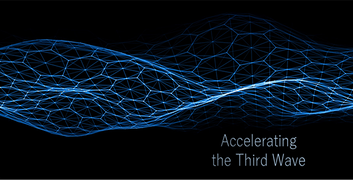
September 2018
The AI Next Campaign is a HUGE, $2 billion project that DARPA is undertaking to bring about the so called “3rd generation of AI”. Some of that funding will go to computational biologists.
Check it out here
The AI Next Campaign is a HUGE, $2 billion project that DARPA is undertaking to bring about the so called “3rd generation of AI”. Some of that funding will go to computational biologists.
Check it out here

September 2018
What about my HIPPA data?! Amazon Web Services (AWS), an extremely popular cloud computing platform, is forging its way into Healthcare. Healthcare professionals can use AWS to process their HIPPA protected information with these guidelines.
Learn more here
What about my HIPPA data?! Amazon Web Services (AWS), an extremely popular cloud computing platform, is forging its way into Healthcare. Healthcare professionals can use AWS to process their HIPPA protected information with these guidelines.
Learn more here

September 2018
Study finds that substantial differences exist across the common results of cardiac imaging modalities.
Read about it here

September 2018
Sharing models instead of data: a potential remedy for medical data sharing problem?
Learn more here

September 2018
A recent study shows high accuracy and scalability of deep learning of electronic health records.
Details here
Interested in specific topics? Let us know at [email protected]
